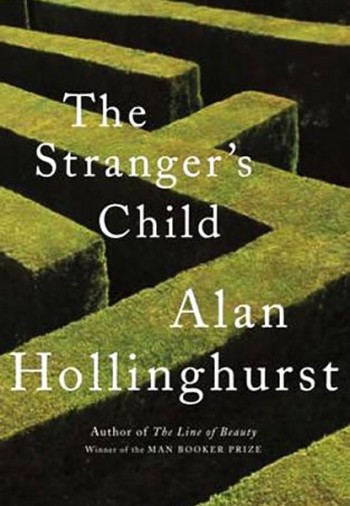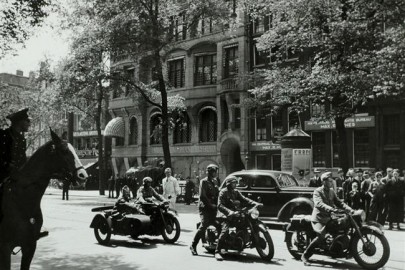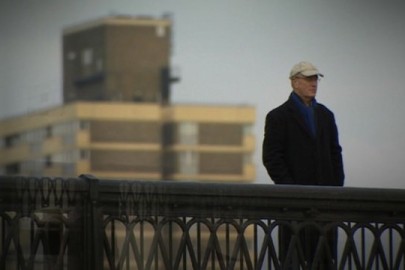This month’s Dabbler Book Club selection was The Stranger’s Child by Alan Hollinghurst (buy it here). Below, Dabbler Book Club member Audrey lets you know her thoughts. But what do you think? Please do let us know in the comments.
The Stranger’s Child was left abandoned by the Booker prize shortlist this year, though it made the longlist and had been seen as a potential prizewinner. That’s been put down to the judges’ predilection for novels that “zip along”, rather than those that meander, as this does, through history and through literature.
What the book does not lack, though, is narrative. There are real stories and real characters here, though many of the conventional events of a novel – the births, the marriages, the deaths – happen offstage; and what really happened in the love affairs and the minds of the protagonists is puzzled over by the characters and the readers alike.
You could call it a book about books about other books, but that would be to sell it short. The Booker prize winner it most recalls is A.S. Byatt’s Possession – I was about to write “recent” winner, until I checked and realized that Possession’s prize is already over twenty years in the past. See, there’s my own nostalgia about books and what they mean to me creeping in. Possession told the story of a modern researcher rediscovering the Victorians, weaving the literary detection together with the modern story, and raising questions over what we can ever really know about the past.
The Stranger’s Child begins in 1913, when the young poet Cecil Valance arrives to stay with his Cambridge friend, George Sawle, at “Two Acres”, a house that will before long be surrounded by suburbs. “Two Acres” is also the title of the poem that Valance writes about his stay; its true meaning guessed at and analysed over the decades that follow. We’re in a world much like Forster’s: a Cecil and a George as in A Room with a View; the houses in a countryside threatened by the urban sprawl of Howards End; the gay relationships of Maurice.
The book leaps forward, to the 1920s, then through the generations to the present day. Daphne Sawle, George’s sister, is the character who is there throughout, from the young girl in awe of the poet Cecil, to an elderly lady. It often takes work for the reader to figure out exactly when we are in time, and what has happened between where we left the characters, and where we meet them again, but it is work that repays the effort.
The later chapters too have their echoes of other novels: the cast of bank clerks, schoolteachers and academics who could have come from Waugh or K. Amis. It’s difficult to pinpoint how Hollinghurst subtly shifts his style to indicate where we are in time. There’s something in the prose which indicates the 1920s, or the 1960s. And as he does this, he shows how we layer over and then uncover what happened in the past. The metaphor for this in the book is the house at Corley Court, the Sawle family home, whose ornate Victorian features, like the “jelly-mould domes” of the dining-room ceiling, are first praised, then modernised away in the 1920s, then later rediscovered beneath the peeling plaster of a building that’s become a school. Meanwhile Cecil is an effigy in marble in the chapel, an idealised version of himself.
It’s beautifully and stylishly done, and has many of the pleasures of a literary detective story, without needing to zip through history. But the question that arose for me towards the end, as we reach the present day, is whether it’s possible to write a literary novel, particularly one that involves literature itself, that isn’t in some way pastiche. I hate to be post-modern about it – I’m normally someone that loves stories and balks at anything meta-, but The Stranger’s Child left me wondering whether even a voice as elegant and polished as Hollinghurst’s can ever really be new, and say something in literature that hasn’t been said before.











Thanks Audrey – certainly doesn’t sound very ‘zippy’ but none the worse for it. The Forster comparison is interesting and seems very appropriate but I haven’t seen it mentioned elsewhere.
Interesting review; very interesting final question.
The book arrived while I was on holiday, so I ought to say at the start that I haven’t finished it. What seems quite clear to me, however, is that the large claims made for Hollinghurst as a prose stylist are by no means overstated.
(I hadn’t read any of his stuff before, probably feeling, rather ignobly, that it was too ‘gay’ to be of interest.)
The book is quite staggeringly well written, with startling expressive felicities in almost every paragraph. Pondering a review, I began to make a list of these but soon gave up as it became clear that I would end up transcribing a great part of the text. The descriptive writing abounds in subtle notations of light and shade, delicate effects of weather and ambience. Hollinghurst captures “the first powdery gleam of light above the curtains” on a summer morning and “birdsong … so loud that after it had woken you it drove you back to sleep.” Similarly, the coming on of rain: “the first hesitant drops, like soft footsteps or tactful throat-clearings … a rush of pattering” or a walk in a moonlit garden “There was no colour, but the garden seemed more and more on the brink of it in the moonlight, as if dim reds and purples might shyly reveal themselves among the grey … The moon burned and slid from window to window as they walked.” Among his other gifts, Hollinghurst is a master of the surprising but apt adjective — the “smutty ferry” plying the Channel, “the desultory spray of the guns” on the Western Front. There are also sudden sharp phrases that make you want to clap your hands in recognition: he notices “the raffish twinkle of a parent dwarfed by her children”, for instance, or the “almost comical air of simultaneous candour and caution” in a political fixer.
This is a rich style and one that is bound to be too literary for some tastes, including, it seems, those of the Booker judges: isn’t it all a bit precious, a bit too self-consciously writerly? I think it’s saved by the accuracy of the observation and a near flawless control of tone: it’s not about decorative flourishes, it’s about finding words to give a sense of what it is like to be alive in a particular place, in a particular moment. For me, that’s a very large part of what the novel ought to be about.
Hollinghurst is also very good at describing children and old people — two Key Performance Indicators for the major novelist, surely. I’d read somewhere that he isn’t too good at women, but on the evidence of this book that’s not true at all. Indeed, he is particularly good at capturing a certain kind of upper-class Englishwoman — the mixture of steeliness and charm, self-deprecation and hauteur. If there’s a weakness, it’s in the depiction of straight men, not that there are too many of these in evidence – they are all either dolts or brutes.
Another big test for the novelist, and one that Hollinghurst passes triumphantly, is the ability to discriminate between the various grades and stages of intoxication, all the way from mild elation to falling-down drunk. Alcohol plays a huge part in the lives of almost all the characters here — there really is far more boozing than gay sex — to the extent that it’s almost a book about drink and its role in the social life of the English. In her final sleepless reflections on her own life and her attempts to make sense of it all, Daphne admits: “The fact was that all the interesting and decisive things in her adult life had happened when she was more or less tight: she had little recall of anything that occurred after about 6.45, and the blur of the evenings, for the past sixty years and more, had leaked into the days as well.”
As the book goes on, its deepest theme is increasingly that of memory — the ways in which we remember, or fail to remember, our own lives, and the ways in which we seek to memorialiize the lives of others, now gone. Of the central character we read “Daphne was supposed to have a good memory, and this reputation sustained her in the face of the thousands of things she couldn’t remember”. The book’s title is taken from Tennyson’s great elegy In Memoriam — quoted at length in the early chapters — and its dedication reads ‘IM Mick Imlah’ — the Scottish poet (and editor of Tennyson) who died sadly young in 2009. It is Imlah who supplies the bleak epigraph to the book’s final section: “No one remembers you at all.”
A lovely, thoughtful review. I thought The Line of Beauty was beautifully written but I disliked all the characters so much I was glad to finish it. This sounds far more agreeable.
Jonathan,
Thank you for such a thoughtful comment and for picking out some of the beautiful descriptions that I hadn’t pinned down. I agree the writing is splendid, and I loved, but couldn’t isolate, quite how Hollinghurst conveys his atmospheres. Which I suppose is why he is a prize-winning novelist, and I’m not. I also loved the descriptions of Daphne’s boozy memory lapses.
Here’s a short but sweet review by Book Club member Graham Kerr (it wasn’t included in the original post as we’ve only just retrieved it from beneath a recent avalanche of spam in our Dabbler inbox – sorry Graham):